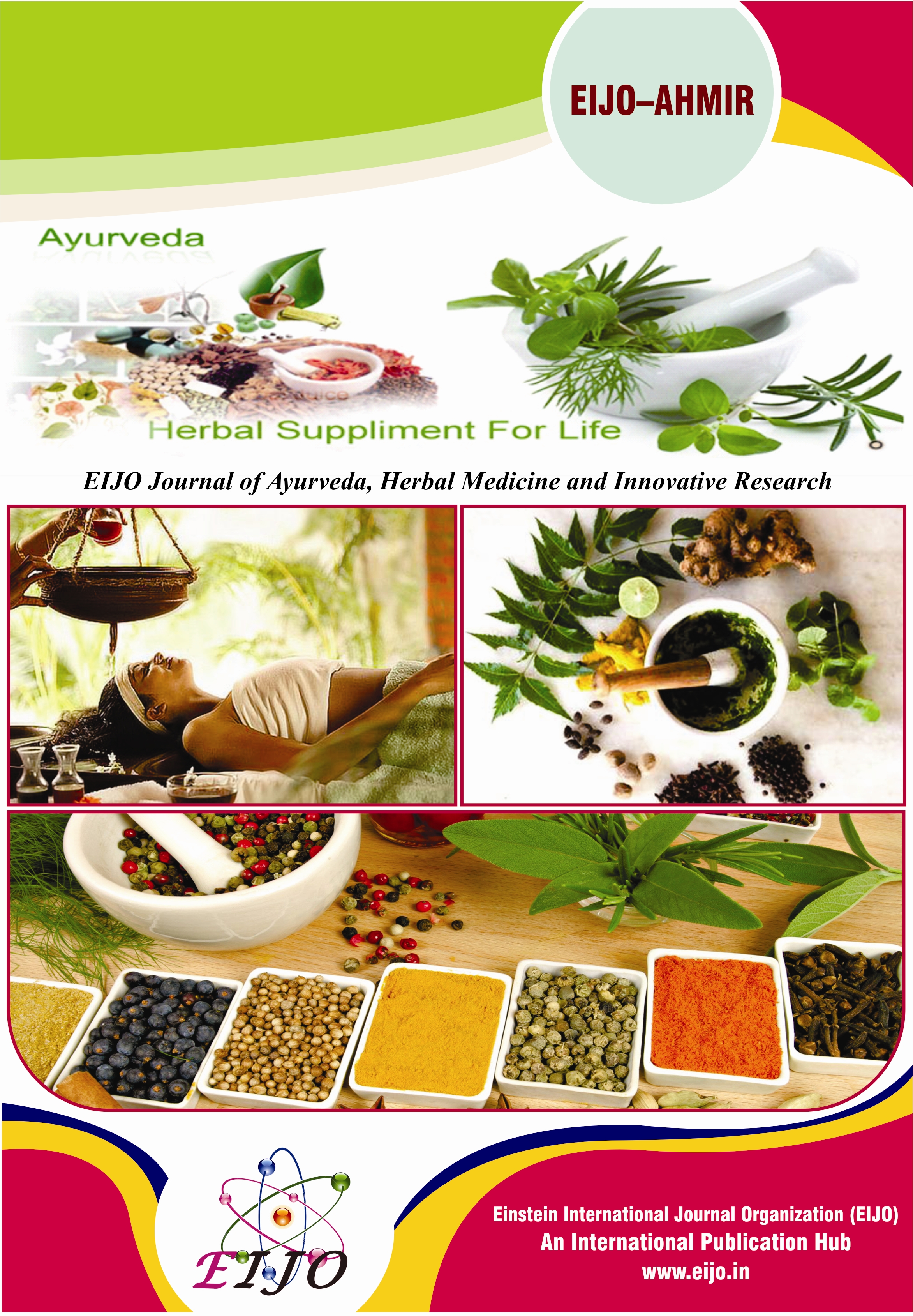JOURNALS || EIJO Journal of Ayurveda, Herbal Medicine and Innovative Research (EIJO – AHMIR) [ ISSN : 2456 - 530X ]
ABSTRACT
The Ayurveda system of medicine is based on the Basic Principles which are in the coded form mainly in the three great treatises namely the Charaka Samhita, Sushruta Samhita and the Vagbhata Samhita. The seers of yore have used their own particular style of narration which needs to be comprehended properly to bring about the desired levels of the theoretical and practical know-how in the Ayurveda scholars. The Charaka Samhita Sootra Sthana is unique as it presents a methodology based on the quartet (a group of four). Each of the seven quartets paves the way for the understanding of all the Ayurveda principles of health care. Therefore it is mandatory for an aspiring Ayurveda physician and academician along with the research scholars to decipher the quartet code of the Charaka Samhita.
Keywords: Basic Principles, Charaka Samhita, Quartet, Health care, Research, Decipher, Code.
[1]. P.V. Sharma, Charaka Samhita, Varanasi, Chaukhamba Orientalia, 1983, p. 237.
[2]. P.V. Sharma, Sushruta Samhita along with the Dalhana commentary, Varanasi, Chaukhamba Orientalia, 2005, p. 4.
[3]. Y.T. Acharya, Charaka Samhita of Agnivesha along with the Ayurveda Deepika commentary, Rashtriya Sanskrit Sansthan, 2006, p. 190.
[4]. P.V. Sharma, Charaka Samhita, Varanasi, Chaukhamba Orientalia, 1983, p. 238.
[5]. V. Dadu, ‘Progressive march of Ayurveda from trisutra to contemporary science of medicine’, World Journal of Pharmacy and Pharmaceutical Sciences, vol. 4, no. 12, 2015, p. 486.
[6]. Y.T. Acharya, Charaka Samhita of Agnivesha along with the Ayurveda Deepika commentary, Rashtriya Sanskrit Sansthan, 2006, p. 14.
[7]. P.V. Sharma, Charaka Samhita, Varanasi, Chaukhamba Orientalia, 1983, p. 1.
[8]. H.J. Purohit, V. Dadu, ‘A comprehensive review of the kaarya- kaarana siddhanta (Theory of cause and effect) in Ayurveda’, WJPPS, vol.5, no. 1, 2016, p. 471-478.
[9]. Y.T. Acharya, Charaka Samhita of Agnivesha along with the Ayurveda Deepika commentary, Rashtriya Sanskrit Sansthan, 2006, p. 23.
[10]. H. Sharma, Ashtang Hridayam of Vagbhata, Varanasi, Chaukhamba Bharati Academy, 2008, 2.
[11]. Y.T. Acharya, Charaka Samhita of Agnivesha along with the Ayurveda Deepika commentary, Rashtriya Sanskrit Sansthan, 2006, p. 61.
[12]. P.V. Sharma, Charaka Samhita, Varanasi, Chaukhamba Orientalia, 1983, p. 123.
[13]. P.V. Sharma, Charaka Samhita, Varanasi, Chaukhamba Orientalia, 1983, p. 144.
[14]. V. Dadu, ‘Philosophical tenets of Vaisheshika and the fundamentals of Ayurveda’, World Journal of Pharmaceutical Research, vol. 5, no. 2, 2016, p. 524.



